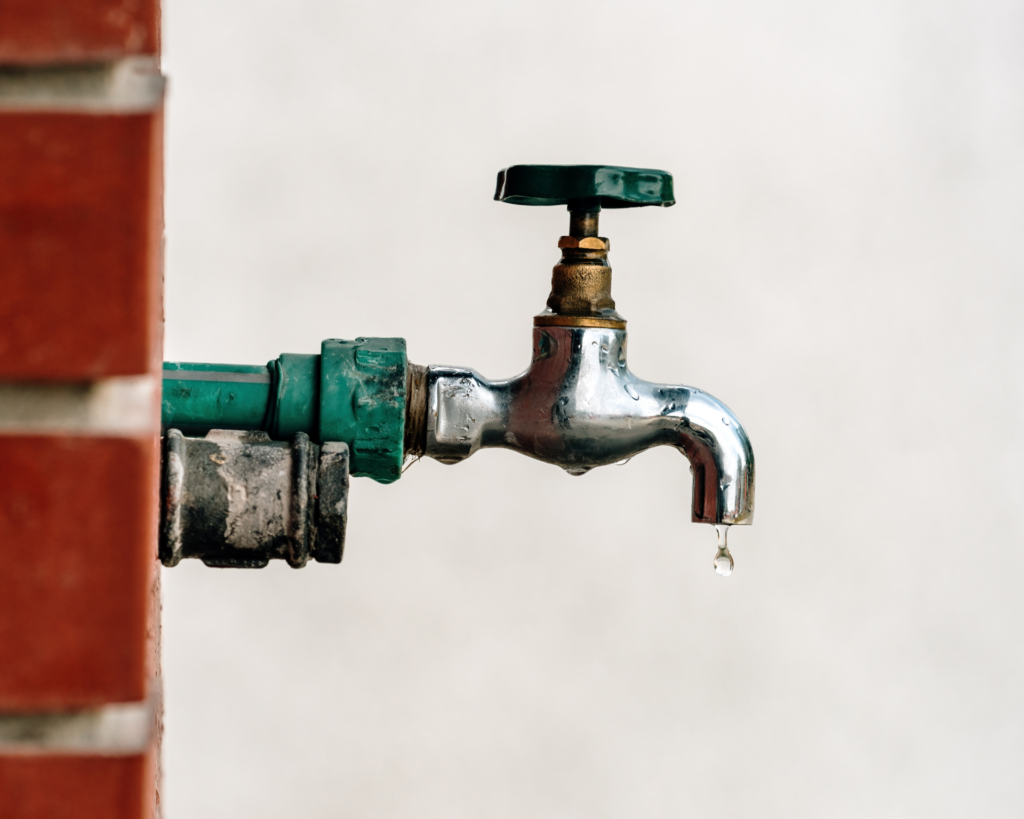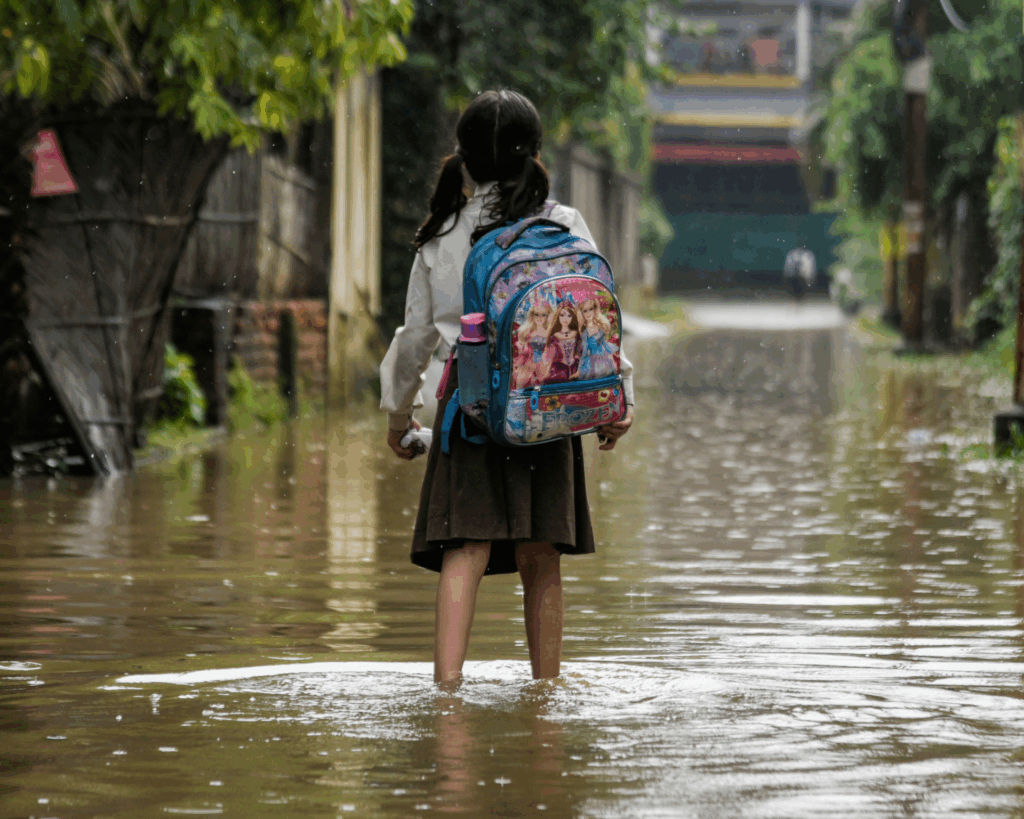Climate Policies Improve the Health of Mothers and Children in NYC
Climate-related policies in New York City have improved air quality across the city, particularly benefitting mothers in polluted areas.
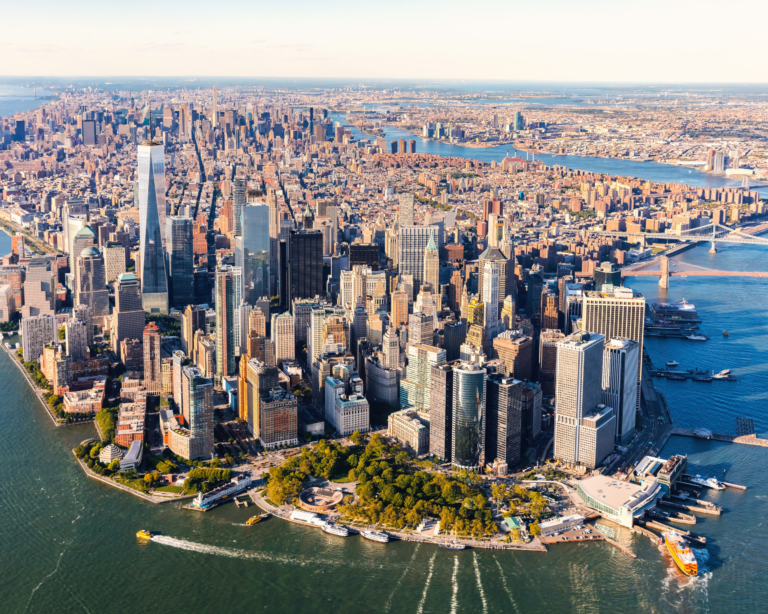
Read Time: 4 minutes
Published:
When expectant mothers breathe in air pollution, the pollutants can be transferred across the placenta to reach the child. While air pollution has long been known to contribute to premature adult death, our research at the Columbia Center for Children’s Environmental Health (CCCEH) in New York City (NYC) has shown that exposure during pregnancy is also harmful to the fetus. We have found that air pollution contributes to poor birth outcomes, increases the risk of asthma and other respiratory illnesses, and is linked to cognitive and behavioral problems in children and adolescents. Additionally, exposure to climate-related stressors and pollution during pregnancy and childhood is also damaging to children’s health and development.
The primary source of air pollution and climate-changing greenhouse gases is the use of fossil fuels for transportation, energy production, and manufacturing. Communities of color and low-income communities are disproportionately affected by these environmental threats.
Cities are at the frontline of both air pollution’s impacts and the development of interventions to protect public health. Like other large cities in the U.S. and globally, NYC has led the way in testing and implementing policies aimed at addressing major environmental challenges, such as unsafe air and climate change. At a time when the value of protecting the environment and curbing climate change is being questioned and when such policies face pushback from the current U.S. presidential administration, documenting the effectiveness of these policies through case studies is crucial. It’s also crucial to understand the extent to which policy benefits reach different racial/ethnic and income groups equitably.
My team recently assessed whether policies enacted in NYC between 1998 and 2021 focused directly on reducing air pollution or mitigating climate change, and whether they have been effective in improving air quality and, by extension, benefiting public health, particularly the health of children who are most vulnerable. Our study is the first to examine trends in exposure among pregnant women over this time frame in Northern Manhattan and the South Bronx, two communities that have been hotspots for air pollution, and compare them to trends city-wide.
These improvements in air quality show that policy-driven action can make a real difference.
We focused on harmful pollutants from fossil fuel combustion, such as tiny particles in the air (PM2.5), nitrogen dioxide (NO2), and toxic chemicals (e.g., polycyclic aromatic hydrocarbons (PAH)). We used city-wide data from the NYC Community Air Survey (NYCCAS) and cohort data from CCCEH studies of mothers and children living in communities with disproportionately high exposure to air pollution (Northern Manhattan and the South Bronx).
For the CCCEH cohorts, we estimated exposure to PM2.5 and NO2 at participants’ residences during pregnancy using validated models. Personal air monitoring data on PAH was collected via backpack monitors worn by mothers in their third trimester. Building upon a previous review of NYC legislation enacted between 1998 and 2017, we identified major clean air and climate legislation enacted between 2017 to 2021. Major policies included the Clean Fuel Bus Program, Clean Air Taxi legislation, the Clean Heat Program, and the Climate Mobilization Act. Since some policies overlapped in time, we could not assess individual policy contributions to air quality changes and focused on estimating their cumulative impact.
We found that from 1998 to 2021, the levels of harmful particles and chemicals in the air dropped significantly across NYC, as shown in Figure 1. Among women living in the most polluted neighborhoods, air quality improved even more, as shown in Figures 2 and 3.
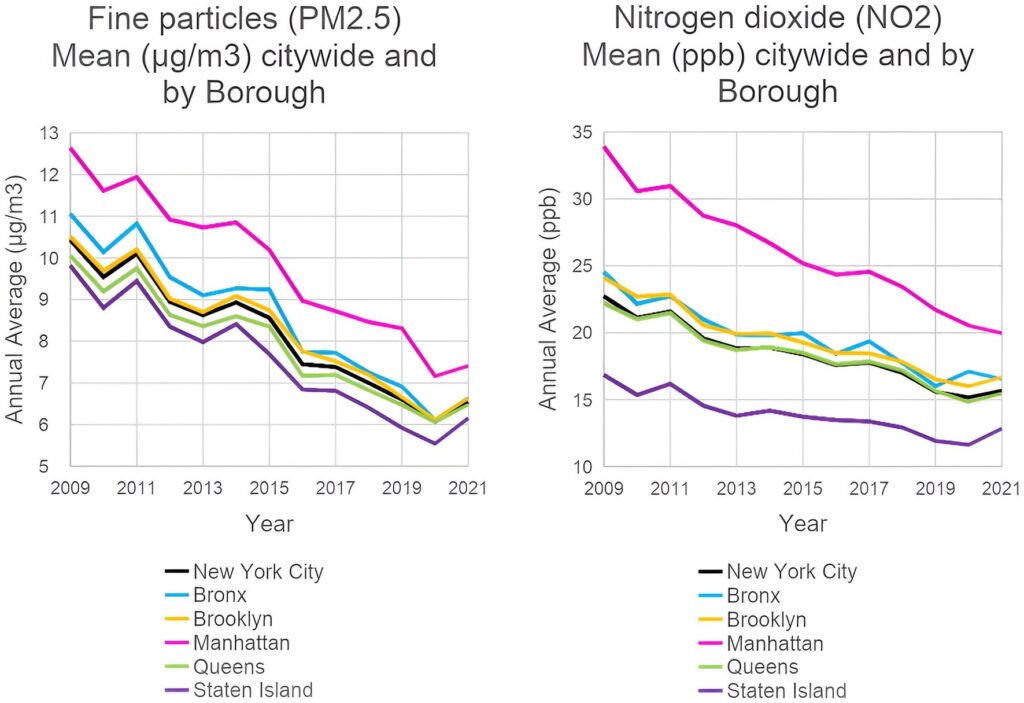
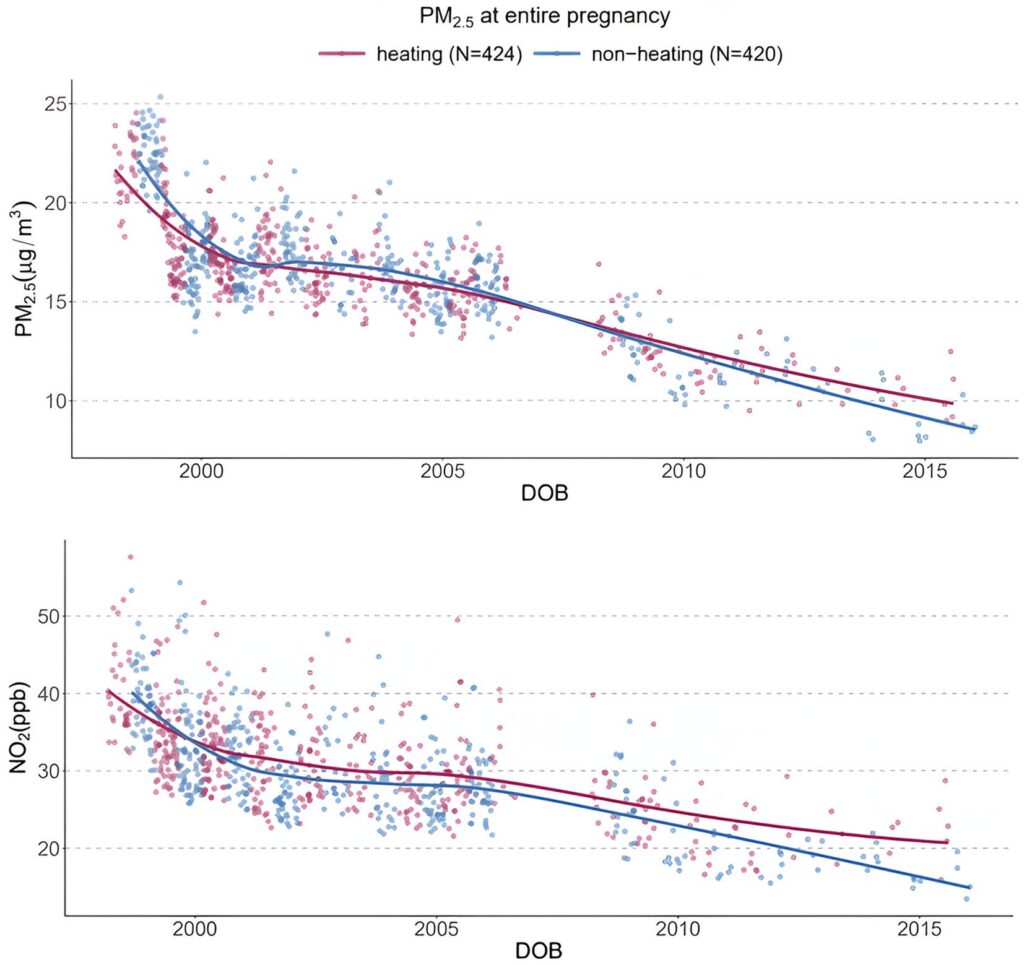
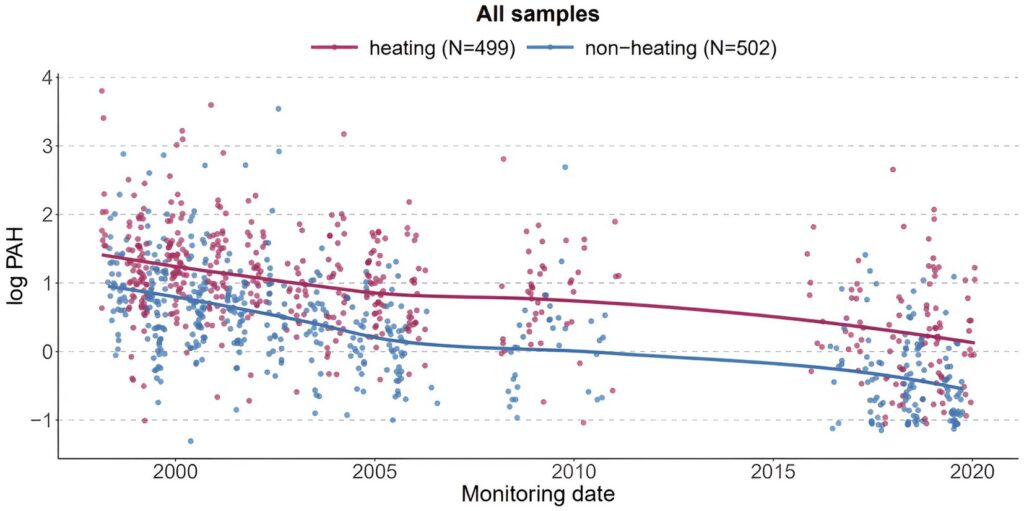
Our findings show that policies aimed at reducing pollution, particularly from fossil fuel combustion, have demonstrated success in NYC. Air quality has improved across the city, with even larger improvements for pregnant women living in the most polluted areas.
These findings have important health implications, especially for children, who are particularly vulnerable to pollution, even before birth. The results highlight the need for continued environmental, climate, and social policy changes to protect public health and prevent the harmful effects of air pollution. These improvements in air quality show that policy-driven action can make a real difference, with much more to be done to ensure that all communities experience benefits.

